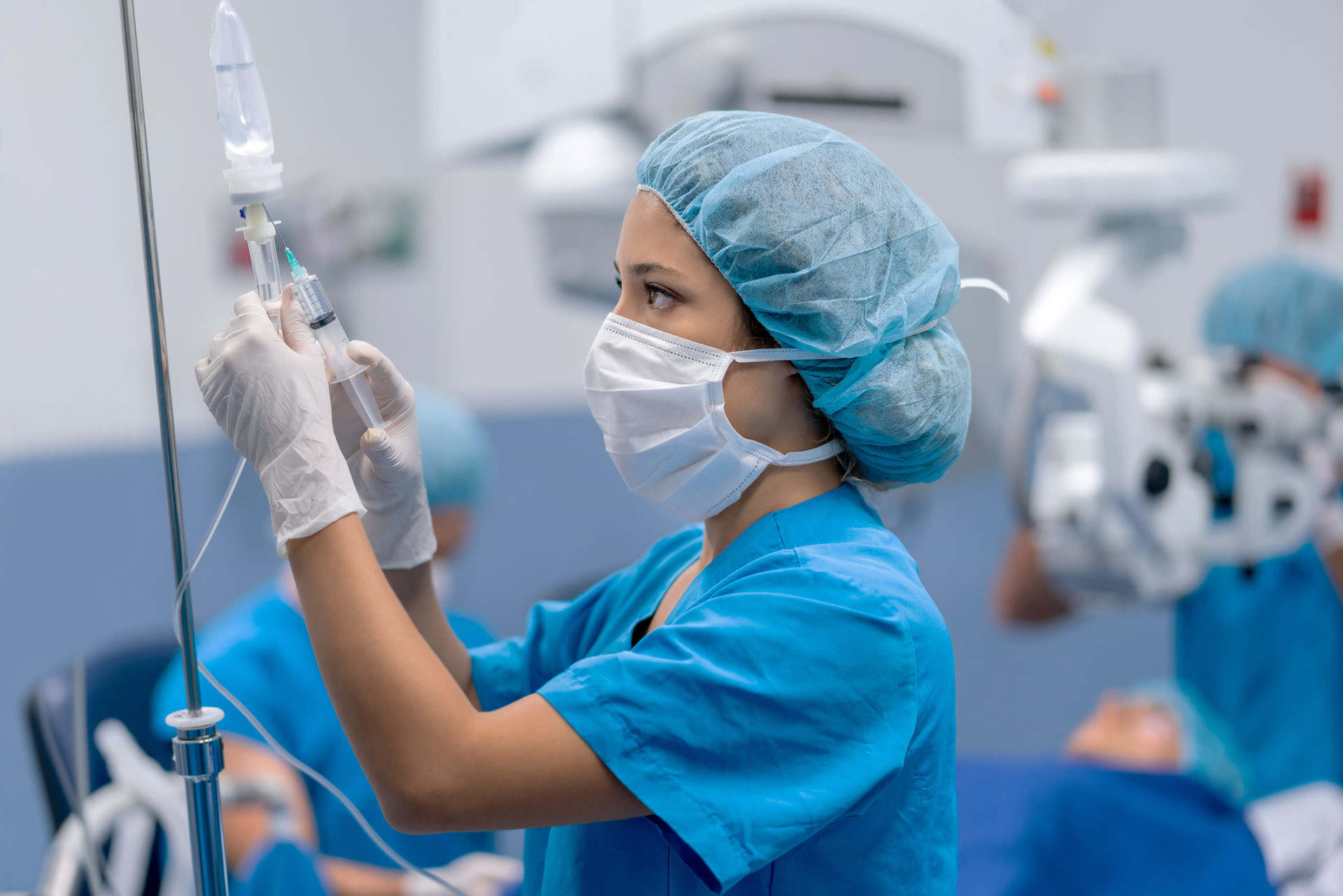|
Getting your Trinity Audio player ready...
|
Nursing is one of America’s most rewarding, trusted, essential professions – a job which affords those who perform it with immense self-worth, job security (and flexibility), competitive compensation and the opportunity for career advancement in any number of different practice areas. It’s also among the most demanding jobs on the market – with long hours, high stress and physically taxing work. In a culture which places a premium on pursuing the path of least resistance, is it any wonder the ranks of nurses are thinning?
While the shortage of registered and licensed practical nurses is growing more serious nationally, it is especially pressing here in the Palmetto State. In fact, South Carolina’s shortfall ranks third nationally based on our population.
If this trend continues on its current trajectory, by 2030 there will be a rash of nursing vacancies in the Palmetto State. At the same time, the last of the Baby Boomers will have reached senior citizen age – the period in life when health and medical services are needed most.
You don’t have to be a mathematician to recognize Increased Demand + Decreasing Supply = Serious Trouble Ahead. Warning lights are flashing red, and unless dramatic changes are made soon the healthcare system we all rely on will be adversely impacted.
Just how serious is the challenge we are facing? It’s never fun to read sobering statistics – but these numbers are too stark to be ignored. According to the S.C. Office for Healthcare Workforce – which is part of the S.C. Area Health Education Consortium – 73,904 licensed nurses were working in our state in 2018. Of those, 41,572 were actively practicing as registered nurses (RNs). The average RN’s age was 45, with 35 percent being fifty or older. About 80 percent of RNs reported working full-time, with a tad more than half of them (53 percent) employed in a hospital setting. Nearly 30 percent worked in ambulatory and long-term care combined.

***
Remember: Those figures were pre-pandemic. The crisis was only exacerbated by Covid-19.
In short, the back end of our nursing supply is graying while fewer new nurses are entering the field on the front end. That is sobering in and of itself. But the picture grows even more troubling when you look toward 2030 – less than eighty months away.
Based on current health care service levels, seven states are projected to have an RN deficit by that time. These shortages would be critical in four states – including South Carolina. How critical? The projected shortage of full-time nurses in the Palmetto State would total a staggering 10,400 assuming nothing changes. Only California, Texas and New Jersey are projected to face more acute shortfalls.
The inevitable consequences of such a shortage are alarming: South Carolina patients and their families would experience significant delays in undergoing major medical procedures – not to mention an overall decline in the quality of care they received from nurses when they finally are able to receive medical attention. At the same time, those who remain in the profession will be overloaded with work like never before.
What is the solution? How do we solve the untenable, unsustainable future nurses are facing? Sadly, there is no silver bullet or magical solution to make this problem disappear. Rather, a series of steps must be undertaken – immediately.
First, there is a dire need for additional training opportunities – and enhanced awareness of nursing as a career option among middle school and high school students. Luckily, the S.C. Hospital Association (SCHA) and others are working hard to interest teenagers in nursing careers. Drawing attention to the availability of loan-financing options for nursing school will also be key to making the profession more accessible and affordable.
Another issue is the availability of training – which the University of South Carolina and Lexington Medical Center are endeavoring to address. USC’s nursing school graduates approximately 220 nurses from its Columbia campus each May. With the addition of a new, state-of-the-art 52,000-foot facility on the Lexington Medical Center campus, USC will be able to graduate 400 nurses per year in the Midlands – an 80 percent increase annually.
In addition to filling the pipeline, medical providers must pay closer attention to their nurses’ concerns and start taking steps to address them internally. That goes hand-in-(surgical)-glove with prioritizing nursing retention efforts and enhancing professional support services. Finding out what incentives motivate more nurses to stay on the job – and then providing those incentives – will also be critical.
Lastly, it’s time to think outside the box. Hospitals, clinics, doctors’ offices, and others who depend on nursing services must devise and implement new strategies and innovative public-private partnerships (like the USC-Lexington Medical collaboration) to ensure there are enough RNs and LPNs to meet the coming demand.
This much is certain: Time is not our friend. Delay is the same as defeat. Prompt, decisive steps today can begin to address this looming crisis and assure the nurses we need will still be there in 2030 and beyond.
***
ABOUT THE AUTHOR…
J. Mark Powell is an award-winning former TV journalist, government communications veteran, and a political consultant. He is also an author and an avid Civil War enthusiast. Got a tip or a story idea for Mark? Email him at mark@fitsnews.com.
***
WANNA SOUND OFF?
Got something you’d like to say in response to one of our articles? Or an issue you’d like to address proactively? We have an open microphone policy! Submit your letter to the editor (or guest column) via email HERE. Got a tip for a story? CLICK HERE. Got a technical question or a glitch to report? CLICK HERE.



6 comments
Red States can expect to experience shortages of medical professionals going forward.
The most diseased and dangerous States to live in are all Red States. Passing legislation that runs medical professionals away won’t end well.
Also, SC is one of the lowest paying States for nurses.
Too bad your Republican overlords are waging war on immigrant.
You should expect nurses and doctors to be in short supply when you chain them to debt slavery to get into their fields and screw them over completely during times of crisis like the country did during the pandemic. Working them like dogs and thinking free pizza is going to make up for it… There are simple solutions to things like this but conservatives can’t think beyond the shackles of their ideology to even begin to fix anything.
FYI–the nursing shortage is already here and it’s already critical. I’ve been at a relative’s bedside for over a week now. The concept of “traveling nurses” has ruined SC hospitals. They can get paid far more and “see the world” and they are never coming back because why would they? They can get paid 2-3 times as much elsewhere. What exactly is the lure to get them back? Because their departure has meant super high case loads for those who remain. The other big issue is the lackadaisical nursing assistants, half of whom don’t do anything but collect a paycheck. The hospital is apparently afraid to fire them b/c of fear of a civil rights lawsuit. The number of complaints from staff I’ve heard is mind-boggling, and the hospital management absolutely, positively do not care. ER wait times are as much as 10-12 hours at this facility. Building more/creating more nurse prep programs will NOT help if they flee the state ASAP b/c of the monopoly a few hospital systems now have in our state. And speaking of those new education programs, if SC educated students can’t get into these medical programs b/c our schools suck so hard (private and public)–what difference will adding more post-sec programs in nursing do exactly? Just create more “travel nurses” who will take off the second they graduate. The irony here is that these hospitals are now having to hire travel nurses to fill those slots and then those nurses get paid 2-3x what a nurse who stays gets. what’s their incentive exactly to stay there? The only way out of either critical shortage in this state is to cut CEO & hospital management pay and reallocate those funds to the nursing staff, hire more assistants and fire those who refuse to work. But they will never do any of those things–god forbid a problem gets solved in SC and a 1% doesn’t get their high pay and bonuses.
This^^^
I am an RN in SC and have been since the last century. At the very top of the nursing pay scale at MUSC my one bedroom one bath simple modest apartment is 65% of my monthly pay. Nurses especially in SC do not make enough money. The insurance industry makes all the money in healthcare.